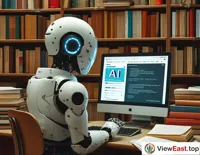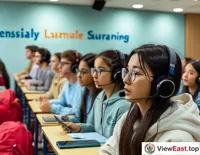





In China, Artificial Intelligence (AI) is reshaping the landscape of education in unique ways, driving innovation in educational models and providing new impetus for the enhancement of educational equity and quality. This article will showcase China's innovative practices and significant achievements in AI-assisted education through a series of compelling stories and examples.
1. Application of AI Technology in the Field of Education
The application of AI technology in China's education sector is becoming increasingly widespread and in-depth. From the official website of the Ministry of Education, we can see that "AI+Education" is changing traditional teaching models. For instance, the appearance of the virtual digital teacher "Yuan Teacher" in music classes breaks the limitations of time and space, allowing students from different schools to sing together. In physical education classes, intelligent terminals display real-time data such as students' heart rate changes, jump rope counts, and average speed, which are all intuitive manifestations of AI technology in education.
2. Policy Support and Practical Cases
The Chinese government has provided strong policy support for the application of AI in the field of education. The Ministry of Education has launched the AI Empowerment Education Action, introducing a series of specific actions, such as the "AI Learning Column" and the upgrade of the National Smart Education Public Service Platform. These measures provide strong support for the application of AI technology in the field of education and inject new vitality.
At the practical level, Chinese educators and scholars are actively exploring the application of AI technology. For example, Tsinghua University has developed several AI teaching assistant systems using AI technology, providing services for teachers and students in various disciplines. These AI teaching assistant systems can provide 24-hour personalized learning support, intelligent assessment, and feedback, assisting students in deep thinking and inspiring learning inspiration.
3. Transformation and Challenges of AI Technology in Education
The development of AI technology has opened up broader spaces for educational reform. At the 2024 World Artificial Intelligence Conference, experts conducted in-depth discussions on the transformation, challenges, and future of AI in education. AI technology not only empowers education but also provides new ideas and methods for educational reform. For example, AI technology can help teachers free themselves from heavy routine work, allowing them to focus more on guiding and inspiring students.
4. Innovative Applications of AI Technology in Education
Innovative applications of AI technology in the field of education continue to emerge. For instance, the Open University of China has built a large-scale personalized smart teaching system based on AI technology, including an English speaking intelligent training system and an English composition intelligent grading system, providing personalized learning support services for students. These applications not only enrich the teaching resource library for educators but also provide students with more efficient and personalized learning paths.
5. AI Technology Aiding Educational Equity
AI technology also plays an important role in promoting educational equity. In Motuo County, Tibet, thanks to the deployment of multimedia equipment deep into the Yarlung Zangbo Grand Canyon and the full coverage of "smart classrooms," the primary school enrollment rate of the Monba ethnic group has achieved 100%. This indicates that AI technology is helping high-quality digital educational resources to cross mountains and seas, promoting more equitable and open education.